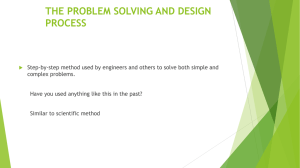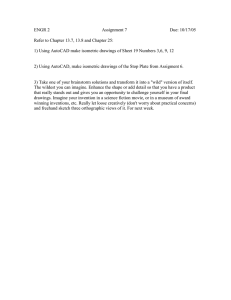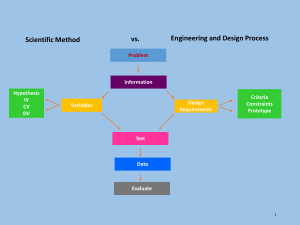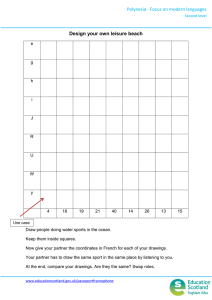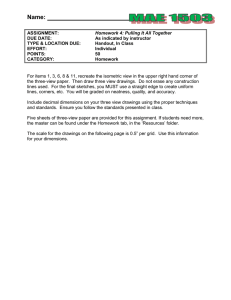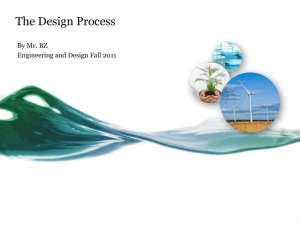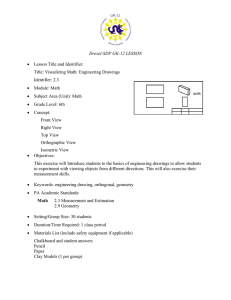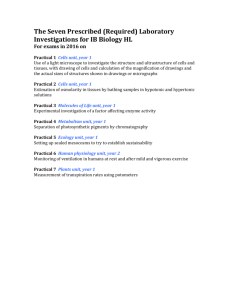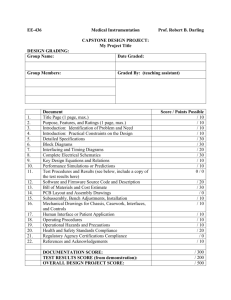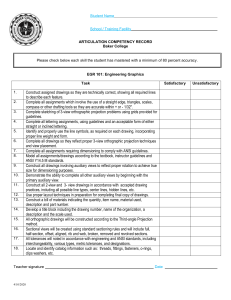Engineering design process outline
advertisement
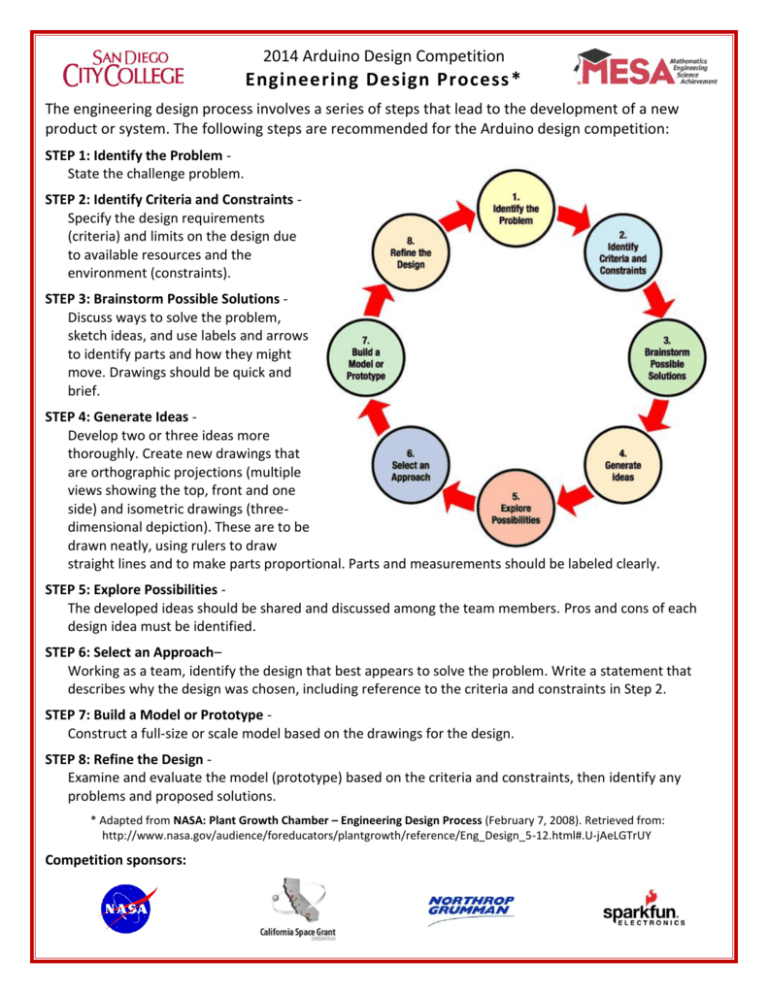
2014 Arduino Design Competition Engineering Design Process * The engineering design process involves a series of steps that lead to the development of a new product or system. The following steps are recommended for the Arduino design competition: STEP 1: Identify the Problem State the challenge problem. STEP 2: Identify Criteria and Constraints Specify the design requirements (criteria) and limits on the design due to available resources and the environment (constraints). STEP 3: Brainstorm Possible Solutions Discuss ways to solve the problem, sketch ideas, and use labels and arrows to identify parts and how they might move. Drawings should be quick and brief. STEP 4: Generate Ideas Develop two or three ideas more thoroughly. Create new drawings that are orthographic projections (multiple views showing the top, front and one side) and isometric drawings (threedimensional depiction). These are to be drawn neatly, using rulers to draw straight lines and to make parts proportional. Parts and measurements should be labeled clearly. STEP 5: Explore Possibilities The developed ideas should be shared and discussed among the team members. Pros and cons of each design idea must be identified. STEP 6: Select an Approach– Working as a team, identify the design that best appears to solve the problem. Write a statement that describes why the design was chosen, including reference to the criteria and constraints in Step 2. STEP 7: Build a Model or Prototype Construct a full-size or scale model based on the drawings for the design. STEP 8: Refine the Design Examine and evaluate the model (prototype) based on the criteria and constraints, then identify any problems and proposed solutions. * Adapted from NASA: Plant Growth Chamber – Engineering Design Process (February 7, 2008). Retrieved from: http://www.nasa.gov/audience/foreducators/plantgrowth/reference/Eng_Design_5-12.html#.U-jAeLGTrUY Competition sponsors:
